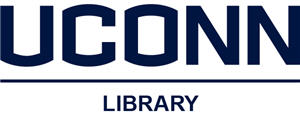Document Type
Article
Disciplines
Agriculture | Life Sciences
Abstract
Herbicide resistance is becoming more common in weed ecotypes and crop species including turfgrasses, but current gaps in knowledge limit predictive ecological risk assessments and risk management plans. This project examined the effect of annual glyphosate applications on the vegetative growth and reproductive potential of two weedy bentgrasses, creeping bentgrass (CB) and redtop (RT), where the glyphosate resistance (GR) trait was mimicked by covering the bentgrass plants during glyphosate application. Five field plots were studied in habitats commonly inhabited by weedy bentgrasses including an agricultural hayfield, natural meadow, and wasteland. Results showed that annual glyphosate treatment improved bentgrass survivorship, vegetative growth, and reproductive potential compared with bentgrass in unsprayed subplots. In the second year of growth, RT plants had an 86-fold increase in flower number in glyphosate-treated subplots versus controls, while CB plants had a 20-fold increase. At the end of the three year study, plant community composition had changed in glyphosate-treated subplots in hayfield and meadow plots compared to controls. Soils in subplots receiving glyphosate had higher nitrate concentrations than controls. This is the first study to mimic the GR trait in bentgrass plants with the goal of quantifying bentgrass response to glyphosate selection pressure and understanding the impacts on surrounding plant communities.
Recommended Citation
Ahrens, Collin W. and Auer, Carol A., "Annual Glyphosate Treatments Alter Growth of Unaffected Bentgrass ( Agrostis ) Weeds and Plant Community Composition" (2012). Open Access Author Fund Awardees' Articles. 10.
https://digitalcommons.lib.uconn.edu/libr_oa/10



Comments
Originally published in :
PLoS One. 2012; 7(12): e50643. Published online Dec 4, 2012. doi: 10.1371/journal.pone.0050643 PMCID: PMC3514225 Copyright: 2012 Ahrens, Auer. This is an open-access article distributed under the terms of the Creative Commons Attribution License, which permits unrestricted use, distribution, and reproduction in any medium, provided the original author and source are credited.